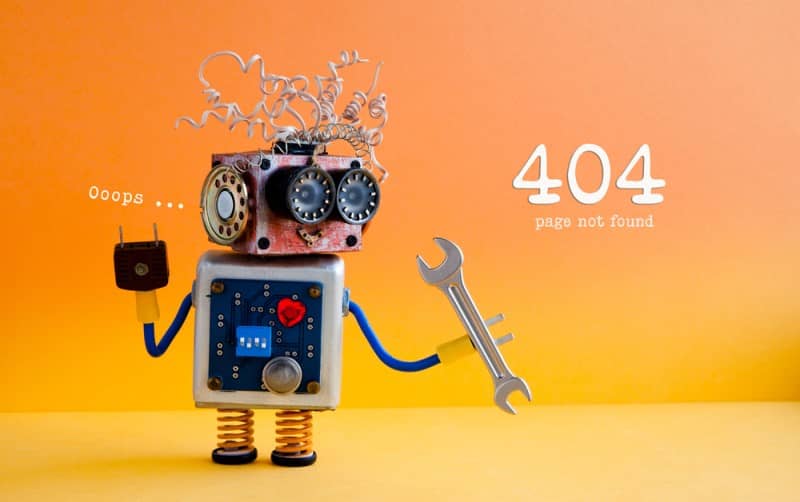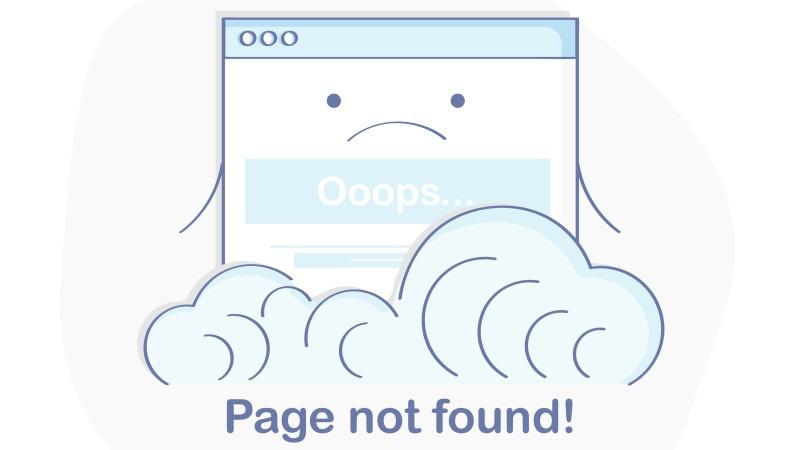
Broken links are frustrating
Broken links could just be the number one contender when it comes to things that annoy a website user. And why wouldn’t a user be annoyed, when a 404 error essentially represents a slammed virtual door in the face?
Show me the information!
There is nothing worse than being slapped in the face by a 404 page. It’s a backhand you don’t quite expect: One minute all is fine in the world, up is up, down is down and links go to where they say they will. Sadly, not all links are what they seem and next thing you know you are being ambushed by a 404 page.
Aside from being irritating to deal with broken links do nothing for user experience. A lot of the time pushing a user closer to giving up on your website and taking their business somewhere else. Bottom line if a user is given the promise of more information via a link then you had better deliver, or risk alienating them completely.
via GIPHY
Google hates 404 errors just as much as you
You are not alone in your distaste for broken links. In fact, the Ruler of the Internet, Google, finds them just as annoying as you and your users do too. So much so that having multiple broken links on your website will negatively affect your website in the eyes of Google. 404 errors make a search engine crawler’s job much harder and can even stop them dead in their tracks. If a crawler is prevented from indexing parts of your website because of 404 errors, those pages subsequently cannot be shown to Google search result users.
What causes broken links?
There are a few main culprits when it comes to broken links, some easier to control than others. It is wise to know how they can occur since knowing the cause of a broken link can be half the solution.
1. User error
Kicking off this brief list is the simplest way to create a broken link… Create it yourself! Obviously, shooting yourself in the foot with a self made broken link is not ideal, and I like to think that 99% of these cases can be classed as accidents, but the result is the same:

A common culprit of the self made broken link is a typo so make sure to check what characters your fingers have typed as you go.
2. Internal site changes
Similar to the above are changes to the linked content on your website. Usually, this means that once upon a time the link worked just fine but somewhere along the line the URL of the page it linked to got changed (or worse the page was removed completely!), leaving the link unable to reach its desired content.
Unlike the first cause, you do not always have to shoulder the blame for this issue as links and pages can be changed by anyone with access to the website’s backend.
3. External site changes
Last but not least is perhaps the sneakiest way broken links can be created, through changes to the external website the link is linking to. This may come in the form of a URL change (as described in the previous cause), or a straight deletion of the page the link is linking to. Because you do not control the external website these are harder to fix but solutions can still be put in place.
What can I do to prevent broken links on my site?
Before we look at fixing broken links we first must address how to prevent them, since as someone much smarter than me (Benjamin Franklin) once said “an ounce of prevention is worth a pound of cure“.
1. Check your links / changes to your website as you make them
The easiest way to prevent broken links is don’t create them in the first place! Put more bluntly don’t be stupid and pay attention to what you are doing. Practically, this looks like the following; When creating a link make sure there are no typos and be sure to check it works before publishing it. Simple.
2. Regularly run the site through a broken link checker
Sometimes the hardest part of maintaining broken links is finding them in the first place. Short of regularly checking your website and clicking a bunch of links, there are an endless number of online tools that can do this for you. Some are good, some are bad, try a couple and see which one works for you.
What can I do to fix 404 errors?
Prevention will not always cover all scenarios when it comes to broken links and some may just fall through the cracks. Regardless you need to be able to fix them when they arise. Here is how to do so.
1. Add in a redirect
One common issue when fixing broken links is ensuring all visitors to the link will be shown to the correct page;
- What if the link exists on multiple pages?
- What if it is being linked to from an external website?
You cannot change all of the links and therefore users could still try and visit the link in question. This can be fixed by adding in a redirect to the site. It doesn’t fix the actual broken link but it will get your users to where they need to go.
2. Manually change the link to another similar page
If the linked page has disappeared completely you may be thinking all hope is lost and you should just cut your losses and remove the link entirely. Before you do so have a look for a page with similar content to redirect to. Sometimes this can be enough to keep Google and users happy. You may even find another page to link too that looks exactly like the old page did in which case give yourself a pat on the back and thank the gods for such a wonderful gift.
3. Remove the link completely
If all else fails, break the glass and remove the link completely. It’s not ideal but it sure beats ambushing users of your website with a rage inducing 404 page.

4. Get someone else to do it (aka Mogul SLA)
Fixing broken links can take an age to get right, you need to find them in the first place, figure out how to fix them, then implement and test the fix. This time adds up really quickly! Luckily for you as part of our SLA package Mogul offer broken link monitoring. This way you can focus on the important parts of your website like content and leave the nitty gritty up to us.
An easy thing to miss
Broken links can be very easily missed and often go unnoticed by a website’s owner for years. Sure there are other things worth spending your time on when it comes to maintaining your website but broken links generally offer a pain free (if sometimes a little time consuming) way of improving how your site is accessed by Google.
On top of that and perhaps, more importantly, is the impact that broken links have on user experience. As we’ve discussed, broken links and 404 errors push users away from your site, and in doing so undo a lot of the hard work, time and money you and others have spent getting them to the website in the first place!

